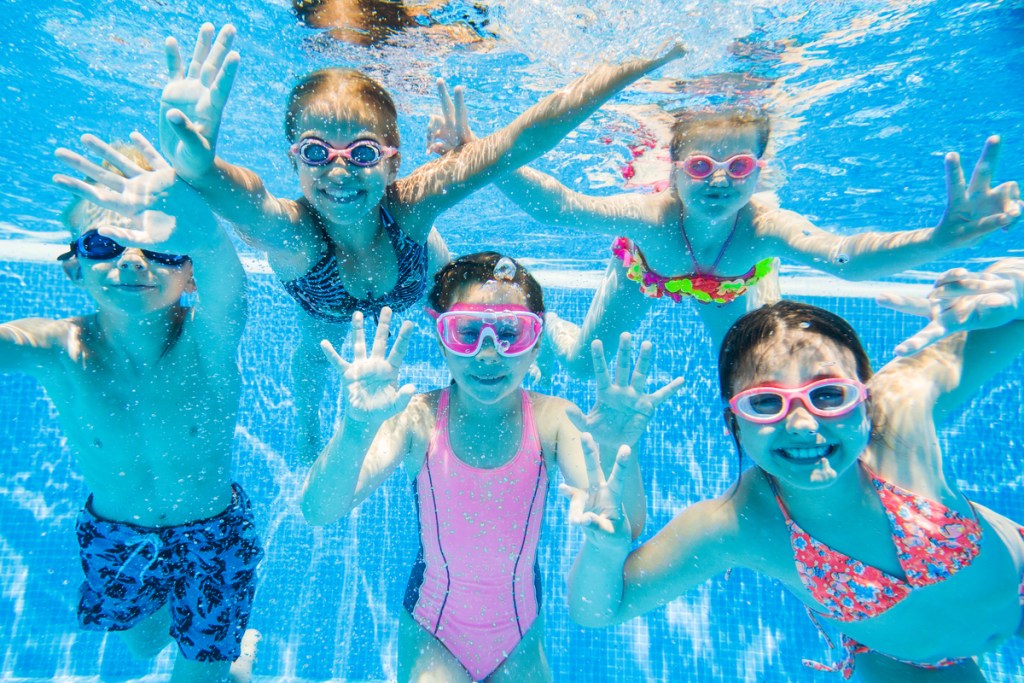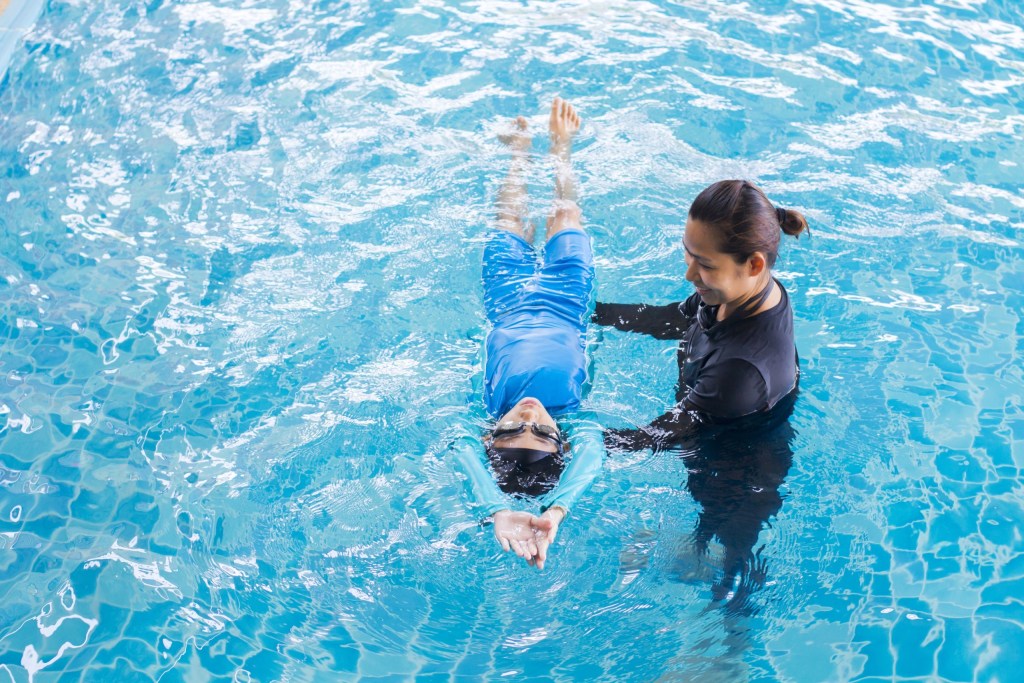Summer is here, and if your yard doesn’t have a pool, plans may be in the works to visit a public pool at some point during the hot days ahead in order to keep the kiddos cool. Swimming is super fun, and kids love to go to the public pool, but it’s important to have a safety plan in place. What do you need to know about public pools to keep your children and teens safe when spending the day at one? Being in charge of kids at a pool is stressful, but we have public pool tips to keep everyone safe and having a splashing good time.

Importance of pool safety
Pools are a blast, but real dangers lurk in those refreshing waters. Drowning deaths occur quickly and not always in deep water. An adult can drown in less than a minute and a child in less than 20 seconds. According to the Centers for Disease Control, drowning is the fifth-highest cause of unintentional deaths across the nation. One in five drowning victims is under the age of 14. For every childhood drowning fatality, statistics show another five are taken to the emergency room with submersion injuries. Some submersion injuries can cause permanent brain damage. The statistics are sobering, which makes public pool safety a vital priority.
Seating
Get to the pool early to ensure you get a prime spot close to the water where your children are swimming. You don’t want to be too far away from where the kids are going to want to be playing.
Bring help
If you have multiple children of different ages, watching them all in the pool is quite a job. Bring an extra pair of adult hands to divide and conquer when the kids are in the water. One adult can keep an eye on the little ones in the shallow end while the other has eyes on the older kids in the deeper water.
Keep your eyes on the water
While it’s tempting to grab a beach read, check emails, chat with a friend, or scroll through Instagram when your children are in the water, it is extremely important to make sure at least one parent or caregiver is watching the pool. Avoid letting tweens or teens keep an eye on the kiddos in the water. It’s a big responsibility that tweens and teens aren’t ready for. If you’re going to the pool with another family, don’t ask them to watch your kiddos along with theirs. Other parents won’t necessarily watch your kids as carefully as you would, and when there are a lot of children in the water to watch, it’s not a one-person job.
Never rely on lifeguards
Of course, public pool lifeguards are certified, but public pools are crowded and busy places. It’s impossible for three or four lifeguards to have eyes everywhere, and tragically, sometimes they miss things. Think of lifeguards as a safety net. No one is going to watch your children more closely in the water than you.

Enroll in swim class
Before you even hit the public pool, make sure your child is confident in the water. Sign your children up for swimming classes. Many health clubs and YMCAs offer swimming lessons year-round. Public pools and summer day camps offer swim lessons seasonally. Check what’s available in your area. A professional certified swim instructor teaches participants proper strokes and water safety. Four is the ideal age to start swim classes for kids. If you can’t swim or aren’t confident in the water, take a swim class. Don’t be embarrassed. Water safety is a priority for adults, teens, and children. If you’re watching children in the water, you need to be able to jump in if there’s an issue.
Teach water safety
Before the kids even arrive at the public pool, make sure they understand basic pool safety rules. Kids and teens may think public pool restrictions are lame, but the rules are there to keep everyone safe.
- No diving in shallow water
- Don’t jump in headfirst unless the area of the pool is deep enough for diving
- Always swim with a buddy
- No running by the pool
- Don’t swim in water over your head
- Always look for the closest pool side if in trouble
- Avoid rough play in the water
- Stay away from drains, skimmers, and other openings with suction
- Tell an adult if someone is struggling in the water
Be prepared for an emergency
Make sure your phone is fully charged at the pool in case it’s needed in an emergency. Parents and caregivers should know basic first aid and CPR. Time is of the essence when drowning incidents occur. Yes, lifeguards are first aid and CPR certified, but if you’re first on the scene, it’s important to act quickly.
Keep these seven public pool safety tips in mind when you plan your next visit to a pool or water park. It’s easy to relax in the warm sunshine and take your eyes off the pool, but a lot can happen in that minute. Even in the baby pool, parents need to be alert. While all the safety tips are vital, the major one is to make sure your child can swim. They don’t have to love water or be a champion swimmer, but knowing how to swim, tread water and float can save their life.



